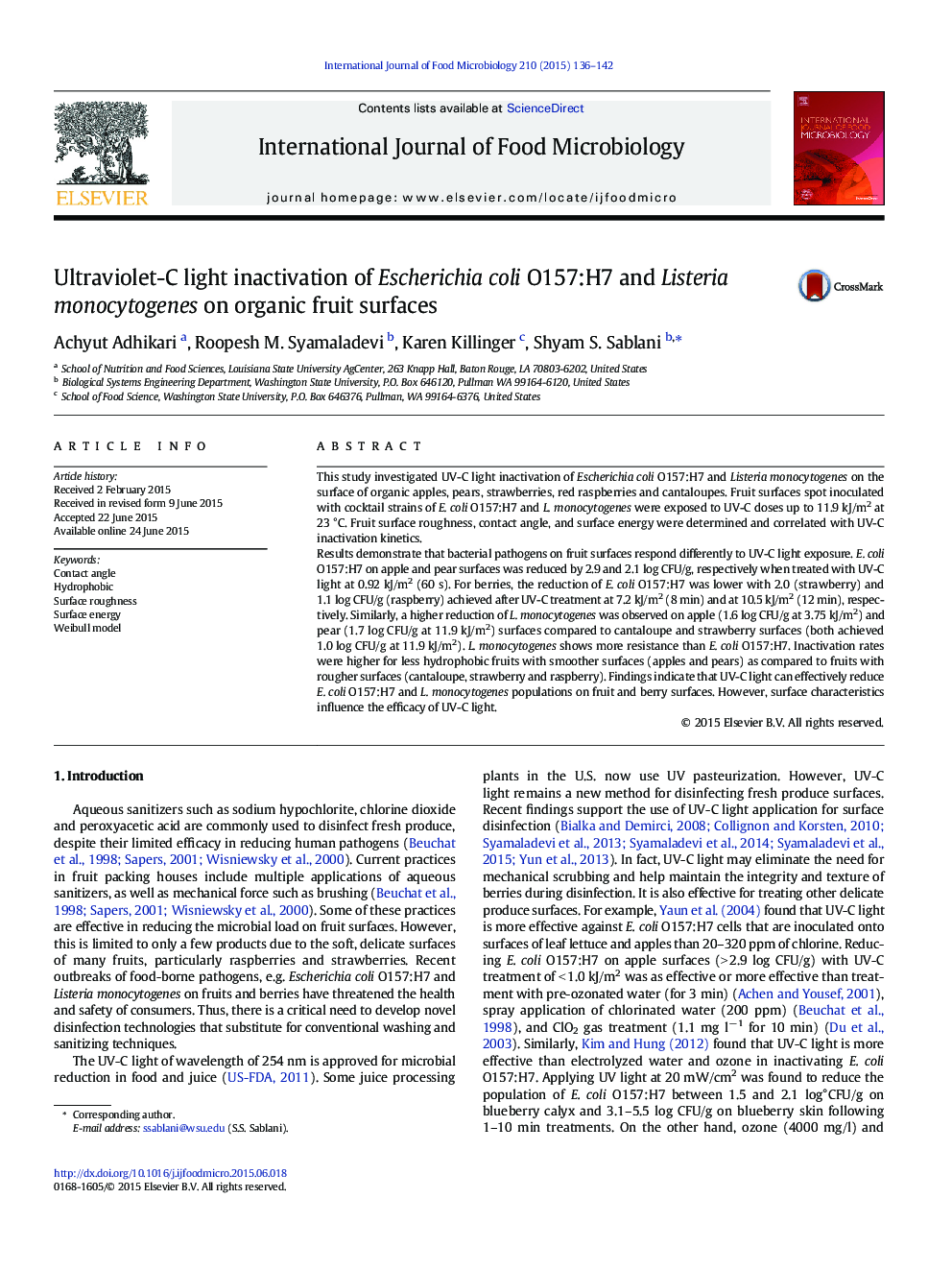| کد مقاله | کد نشریه | سال انتشار | مقاله انگلیسی | نسخه تمام متن |
|---|---|---|---|---|
| 4366496 | 1616573 | 2015 | 7 صفحه PDF | دانلود رایگان |

• L. monocytogenes showed more UV-C resistance than E. coli O157:H7.
• UV-C inactivation of pathogens was more effective on smoother surfaces.
• E. coli and L. monocytogenes reduced by 2.9 and 1.6 log CFU/g, respectively on apple.
• A maximum of 1.1 log CFU/g reduction of E. coli was observed on raspberry.
• L. monocytogenes reduced by maximum 1.0 log CFU/g on strawberry and cantaloupe.
This study investigated UV-C light inactivation of Escherichia coli O157:H7 and Listeria monocytogenes on the surface of organic apples, pears, strawberries, red raspberries and cantaloupes. Fruit surfaces spot inoculated with cocktail strains of E. coli O157:H7 and L. monocytogenes were exposed to UV-C doses up to 11.9 kJ/m2 at 23 °C. Fruit surface roughness, contact angle, and surface energy were determined and correlated with UV-C inactivation kinetics.Results demonstrate that bacterial pathogens on fruit surfaces respond differently to UV-C light exposure. E. coli O157:H7 on apple and pear surfaces was reduced by 2.9 and 2.1 log CFU/g, respectively when treated with UV-C light at 0.92 kJ/m2 (60 s). For berries, the reduction of E. coli O157:H7 was lower with 2.0 (strawberry) and 1.1 log CFU/g (raspberry) achieved after UV-C treatment at 7.2 kJ/m2 (8 min) and at 10.5 kJ/m2 (12 min), respectively. Similarly, a higher reduction of L. monocytogenes was observed on apple (1.6 log CFU/g at 3.75 kJ/m2) and pear (1.7 log CFU/g at 11.9 kJ/m2) surfaces compared to cantaloupe and strawberry surfaces (both achieved 1.0 log CFU/g at 11.9 kJ/m2). L. monocytogenes shows more resistance than E. coli O157:H7. Inactivation rates were higher for less hydrophobic fruits with smoother surfaces (apples and pears) as compared to fruits with rougher surfaces (cantaloupe, strawberry and raspberry). Findings indicate that UV-C light can effectively reduce E. coli O157:H7 and L. monocytogenes populations on fruit and berry surfaces. However, surface characteristics influence the efficacy of UV-C light.
Journal: International Journal of Food Microbiology - Volume 210, 1 October 2015, Pages 136–142